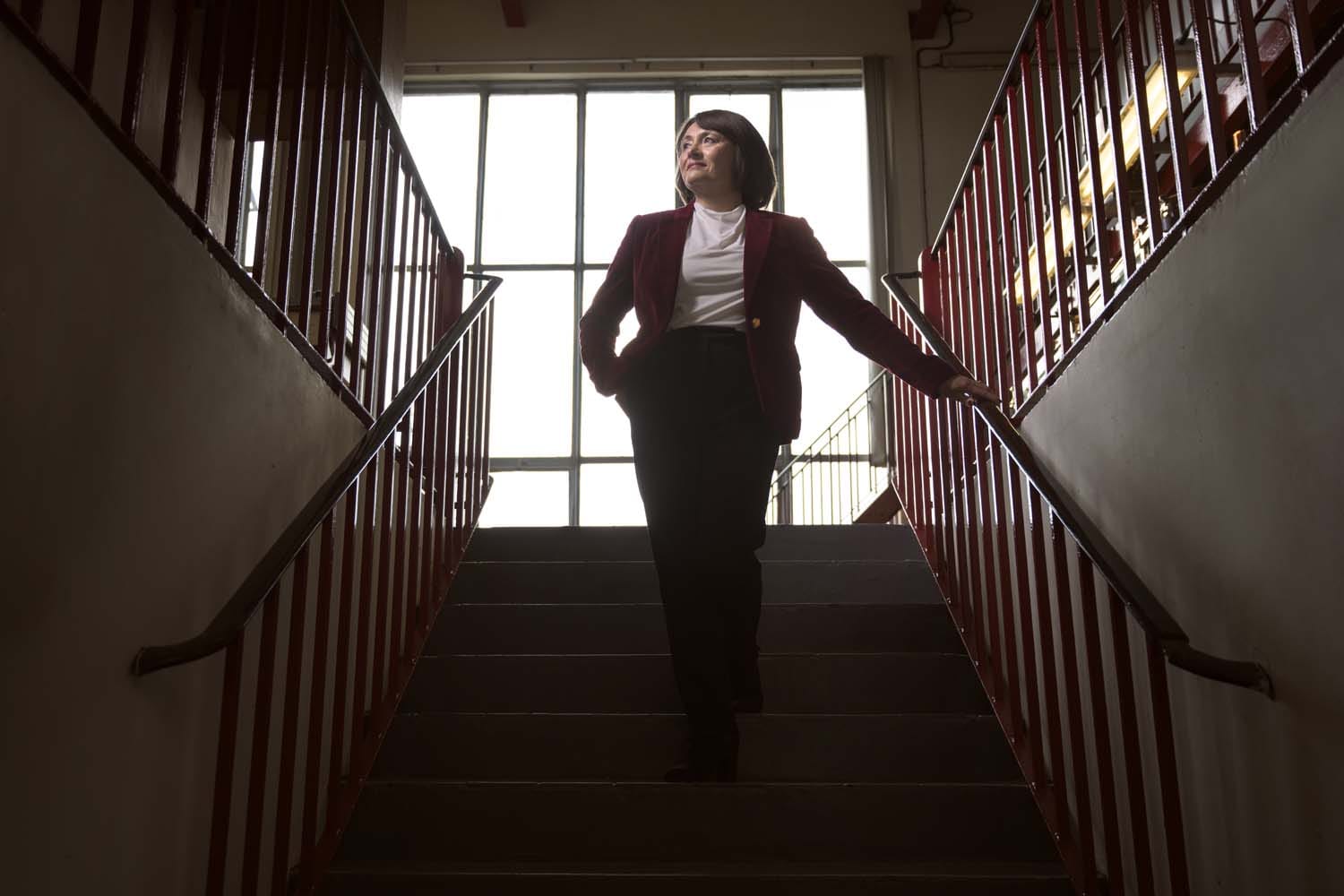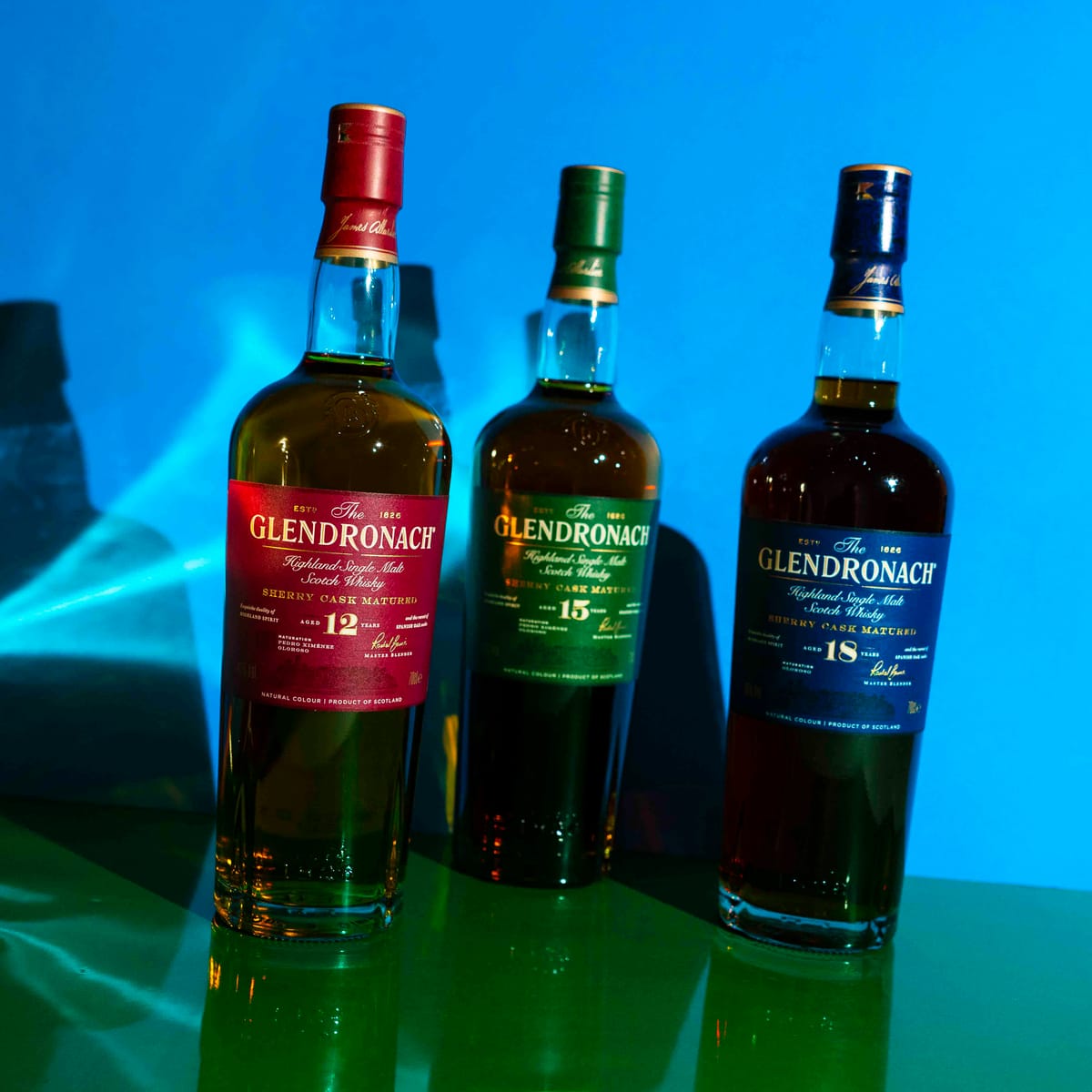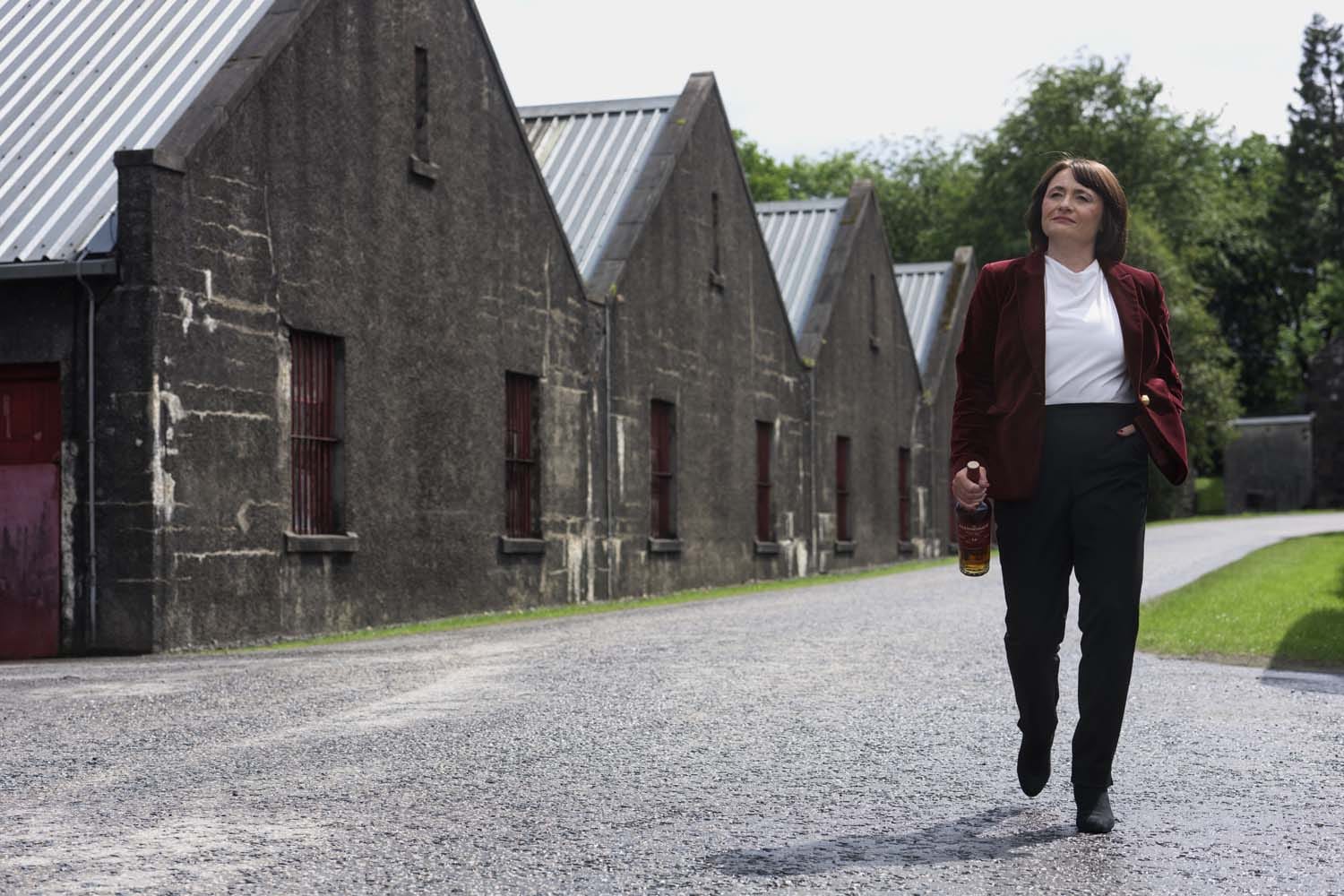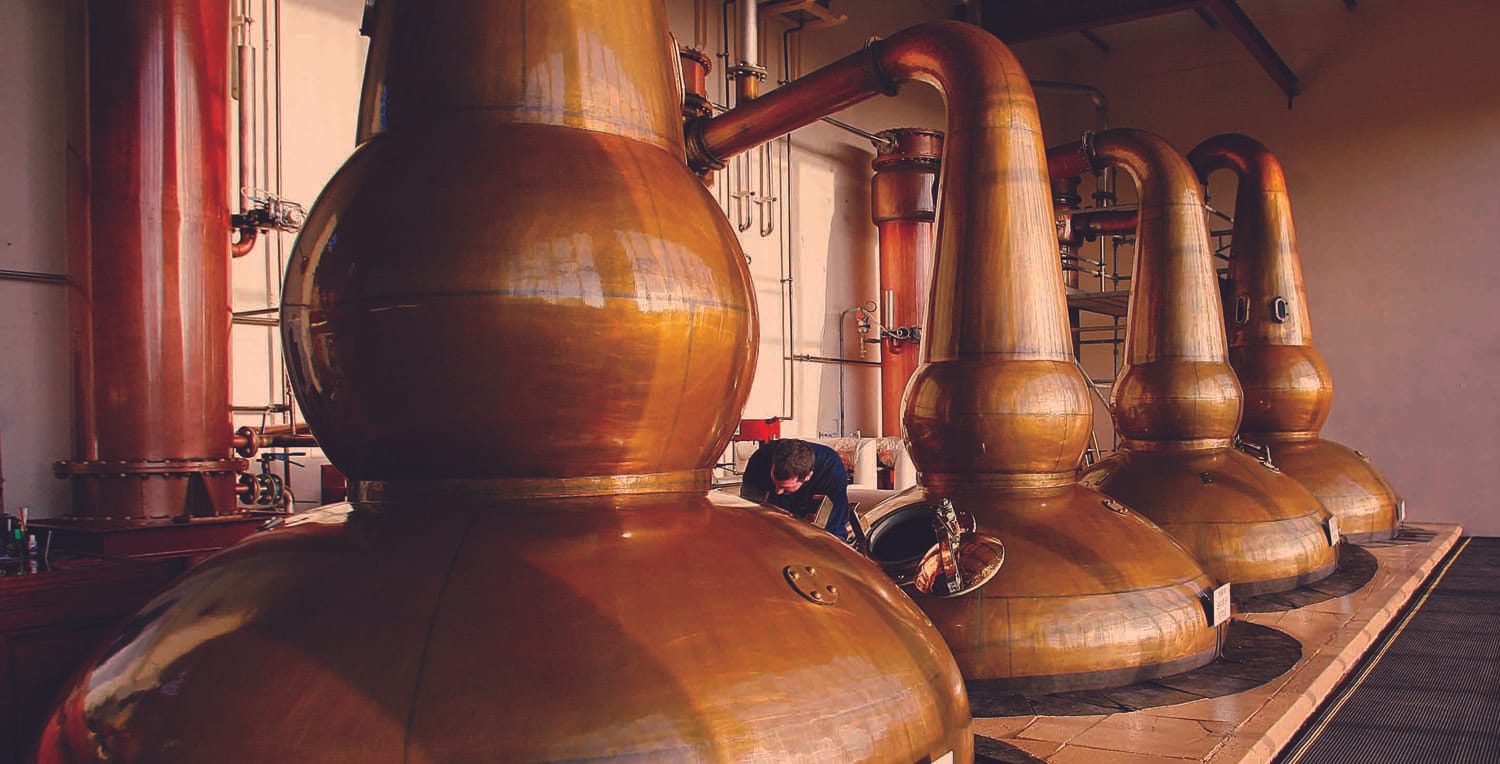Dr Rachel Barrie has nosed over 170,000 whisky casks
A (very) busy week in the life of The Glendronach's master blender.

I’ve always admired specialists, perhaps because I’m more of a generalist — I know a bit about a lot of topics in the drinks world. But those experts, who devote their lives and careers to a subject that means a lot to them? I find them fascinating. These people who develop and deepen their knowledge — who continually fall in love anew with their subject each day — are beacons for the rest of us looking for a way through their field.
And in a time when the currency of the realm is the hot take, uninformed as they may be, I think a little expertise is a welcome thing.
On this week’s episode of Drinks At Work, we’ve got deep, deep expertise. I’m talking to the master blender for The Glendronach, Dr Rachel Barrie, about her career — she has, as she says in the chat here, nosed somewhere around 170,000 barrels of whisky to date. That is just a crazy number of whiskies to have been exposed to in one lifetime. We talk about what a week in the life of a master blender looks like, and we get into the new campaign for The Glendronach, which is all about Raising Expectations.
It was a genuine pleasure to speak to Dr Barrie, and I particularly loved her answer to the question of whether if, throughout this long career in whisky, through all this familiarity, if she is ever genuinely wowed by whisky these days. It’s a great answer.
Below, lightly edited and condensed for clarity is a sample of our full conversation, which I’d encourage you to listen to in your podcast player of choice.


Boothby: How did you get to be where you are here today?
Dr Rachel Barrie: A long and winding road, I would say. I started with medicine and then studied chemistry and then was very lucky to be recruited by the late, great, Dr. Jim Swan, who was really the Einstein of whisky. He was my mentor back in 1991, right through to ’95 and beyond. I left the Scotch Whisky Research Institute where I worked with him, and then worked with various other whiskies for 17 years. Before I got a tap on the shoulder, and here I am at Brown-Forman, with my favourite whisky of all time — my dad’s favourite whisky of all time. I was born and brought up in Aberdeenshire near the Glendronach distillery. You can probably hear it from my tone.
To be a master blender, it’s sampling whisky — one can never sample enough whisky, nosing enough whisky. I’ve nosed probably about 170,000 casks now.
170,000 casks, you’re counting, I like that.
Yeah, but that probably explains the master blender in a nutshell. The essence of being a master blender is really getting to know every cask as intimately as you can.
As a master blender, what does your day to day involve? I’m sure there’s no typical week, but can you give us an idea of what a week involves for you?
Here I am speaking to you on Friday morning my time. On Monday, I was working on a new whisky for The Glendronach, which will be launched next year, a whole series of whiskies for next year. I was doing cask selections for the 12 year old expression. I was looking at vattings for whiskies that will be bottled in early November for The Glendronach, which will be new also. Looking at warehouse strategy. The opportunity is that you invest a lot of capital, obviously, in a distillery, expanding it, and at the same time, you need to build warehouses. So I was doing that on Tuesday. I wasn’t literally building a warehouse, but was having a chat with people around what do we need in terms of the number of sherry casks, how much are we going to liquidate, how much are we going to need in the future, and that whole capital investment, because the business is investing millions upon millions every year on wood for example. That was only a little bit of Tuesday.
On Wednesday, most of the day, I was in the lab in the morning and I had lots of meetings with senior management. And then I got on plane and went to London, actually, to a distillers debate at The Worshipful Company of Distillers.
It’s fair to say that’s a pretty varied role and a busy role keeping you busy. You do this across a number of distilleries as well, it’s not just Glendronach. What is it that makes The Glendronach unique?
It’s quite elusive and difficult to explain, but for me it is duality. What makes a great whisky, a great wine, a great anything is duality of character. You have to have robust structure along with finesse. And when you have both of those, you have the very, very best, the pinnacle of the distiller’s art.
So what makes it special is lots of production elements, of course, being in the Valley of Forgue in Aberdeenshire, which is the most rich and fertile landscape, and various other aspects.
It still has wooden large washbacks, the Scottish large washbacks. And these are made from the local trees that are nearby. And we have the most exquisite saxophone shaped stills — I don’t know what James Allardice was thinking back in 1826, I wish I knew. He created stills that are remarkable... they have a real duality between the boil ball on the base, which gives you reflux. They’re not too high and the top of the lyne arm is like a gooseneck, it just is like a saxophone, a mouthpiece. And this makes for a very, very robust and characterful spirit, which then marries perfectly in the finest sherry casks.

So are you saying the finesse quotient of that duality, you’re the robustness from the spirit and those stills, is the finesse coming through that maturation process?
Well, yes, but it’s also locked within the spirit.
It’s the things that you cannot smell in the spirit off the still. There is almost an aroma that’s like brambles and green grapes and grape vines — there’s almost these chocolatey notes in the spirit. It’s amazing because it’s not been near a cask yet. A little whiff of tobacco. And it’s very expressive. I think that’s the point I’m trying to get across: it’s a very, very expressive spirit. We’ve got quite a short foreshows and then a long spirit cut. We have this symphony of flavour even in the new make spirit. So it starts there and then it is unlocked during the maturation.
The latest campaign from The Glendronach is about Raising Expectations. I find that interesting because often we talk in hospitality about meeting or exceeding expectations, but you folks are talking about raising expectations. What does that mean to you?
What does it mean to me, raising expectations? It means it’s the pursuit of excellence. So raising expectations is that you never stop. You never stop in the pursuit of excellence, making the whisky the very best it can be. For me as a whisky maker, raising expectations is you know, the dedication that it takes, the time it takes, the endless cask sampling it takes, the constant striving, the aspiration to create the very best — to create the ultimate sherry cask matured single malt, that’s what drives me. And I want to keep raising my expectations and raising expectations in the whisky and also raising expectations in the drinker as well.
You say that you nose 170,000 casks, you’re with whisky all the time, presumably tasting a fair bit as well. Do you ever get tired of whisky or do you ever lose that capacity to be wowed by whisky?
Just like life, it gets richer with age. With age, you become more mellow, of course. The whisky becomes more mellow. And you are able to fully appreciate each moment. And I probably wasn’t able to do that when I was younger. So I would say the journey is definitely richer.
I just find new things every day. I love sharing the whisky with other people. I was just doing tastings this week with others and just seeing the look on people’s faces, seeing the wow factor. I can’t think of a better way to put it.
Getting that feedback, you never tire of that and that’s the human element. Obviously that is so important to bartenders as well, the interaction with people in the bar, finding something they love and seeing the reaction on their faces.
I think because the experience is so rich and so multi-layered in terms of the past the present and the future it is a wonderful way of enriching your life. Working with The Glendonach is so enriching and therefore how could you ever get tired of that richness?



